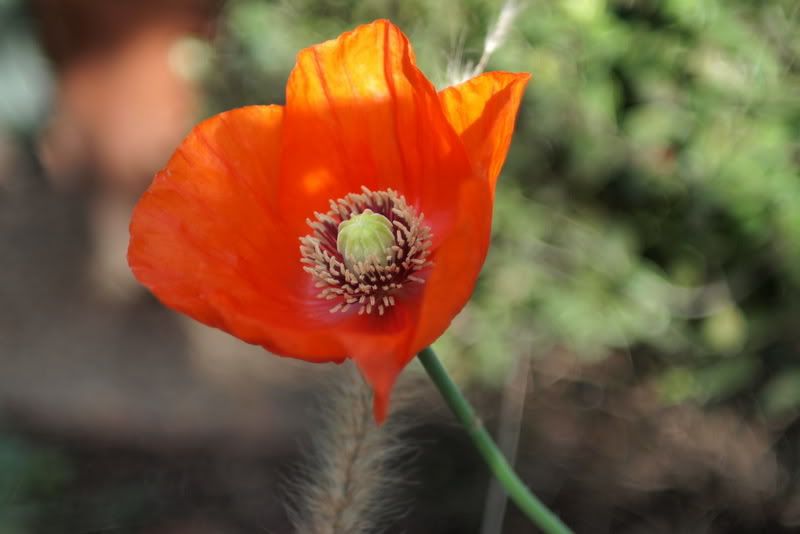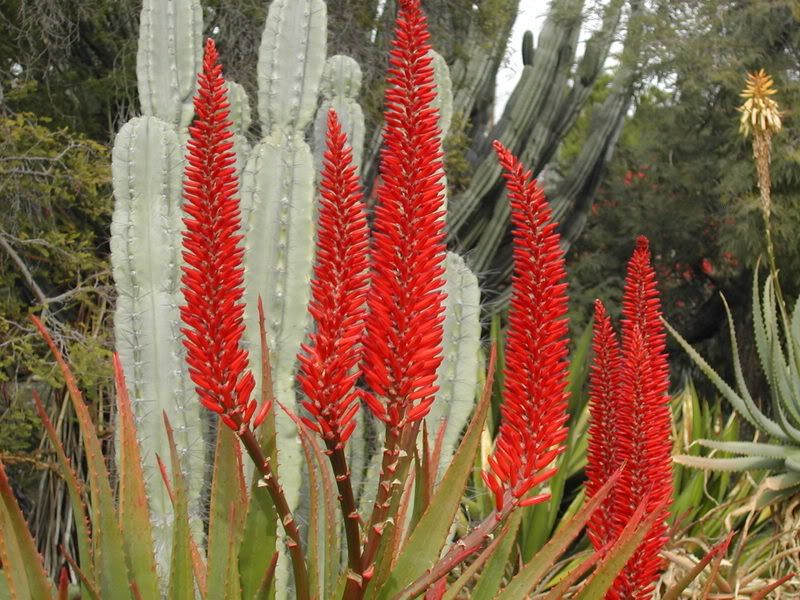in garden design. Really enjoyed the cyber garden summit on regionalism held last week, and found myself nodding along with comments by West Coast writers, such as the Germinatrix and Garden Porn, about being led down the primrose path by a good deal of the anglo-centric garden literature written in the last half of the 20th century. One of the Germinatrix’s main complaints revolved around many of the classic border plants being water guzzlers, and how regional substitutes had to be found, e.g., tough euphorbias for blowsy, water-chugging hydrangeas.
I would modestly add another observation: the difficulty of achieving any degree of simultaneity, the cornerstone of English borders, in a mild winter climate, where plants tend to burst into solo performances at inopportune moments instead of rising together in the crescendo you planned for spring and/or summer.
Here’s the soloist for January, intended to be part of the spring corps de ballet, an Orange Chiffon poppy:

A welcome sight, yes, but guaranteed to be bloomed out now by spring. The objective of amassing a good bunch of self-sowing plants will still be met, so all is not lost. And this poppy blooming today just reminds and reinforces the direction I’ve been heading in anyway, of planning for a big early spring show and reducing attention (and irrigation) in the dry season. One day this direction may ultimately land me looking at my garden filled with aloes blooming in January, with very little room left for herbaceous stuff later in the year, as seen in the Huntington’s succulent and cactus garden several winters ago:

In fact, the whole idea of “borders” is best jettisoned in zone 10, a concept I still have difficulty moving beyond, so ingrained has it become by those effective British proselytizers Jekyll, Verey, Hobhouse, Lloyd, Sackville-West, Lacy, Keen, and on and on. Even Beth Chatto’s rainfall-dependent gravel garden in East Anglia is a massive border. I still routinely plant in a large border, eight feet deep, giving lots more space to plants than people, when I rationally know there should be more permeable hardscape artfully designed to showcase the wondrous array of exotics we can grow, an ancient truism of Mediterranean garden design. If only those obsessive British horticulturists hadn’t gotten to me first…
